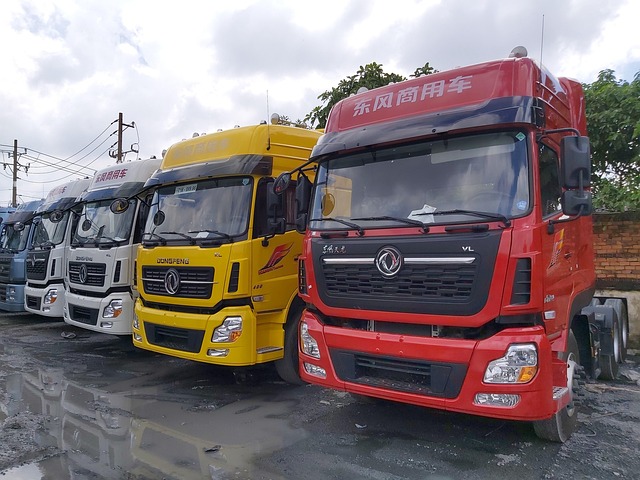Looking to register your car in California? This comprehensive guide walks you through the entire process, from understanding eligibility requirements for car registration in California to completing the DMV VIN verification step-by-step. We’ll also cover preparing your vehicle, post-registration tasks like insurance and tags, and essential maintenance tips. Ensure a smooth experience by following these crucial steps.
- Understand Eligibility Requirements for Car Registration in California
- Gather Necessary Documents for DMV VIN Verification
- Prepare Your Vehicle for Inspection and Registration
- Complete the DMV Registration Process Step-by-Step
- Post-Registration Steps: Insurance, Tags, and Maintenance
Understand Eligibility Requirements for Car Registration in California

Before you begin the registration process for your car in California, it’s crucial to understand the eligibility requirements. One key step is ensuring your vehicle meets all safety and emission standards set by the state. This includes passing a smog test, which verifies that your car’s exhaust system and emissions are within acceptable limits. The Department of Motor Vehicles (DMV) conducts these tests, often referred to as vin verification, using the Vehicle Identification Number (VIN) to ensure the vehicle’s authenticity and history.
Additionally, you’ll need to provide proof of insurance and pay the associated fees. California requires all vehicles on its roads to be insured against liability and other potential risks. A mobile vin inspection or vin inspection by a professional can help streamline this process, ensuring your car is in compliance with all regulations before registration.
Gather Necessary Documents for DMV VIN Verification

Before heading to the California DMV for vehicle registration, make sure to gather all the essential documents required for a successful dmv vin verification. This process is crucial to ensure your car’s identification and compliance with state regulations. You’ll need the vehicle’s title, which proves ownership, along with valid identification documents such as a driver’s license or passport. Additionally, a current insurance card showing proof of financial responsibility is mandatory.
For a smoother vin inspection process, consider having a mobile vin verifier on hand to quickly and accurately provide your vehicle’s unique identifier. This can save time during the DMV visit, especially if you’re unsure about the specific documents required for your situation. Remember to bring any relevant paperwork related to previous registrations or title transfers as well.
Prepare Your Vehicle for Inspection and Registration

Before you begin the registration process, it’s crucial to ensure your vehicle is ready for inspection. Prepare by gathering all necessary documents, including your vehicle registration, proof of insurance, and a valid driver’s license. Additionally, you’ll need to undergo a DMV VIN verification process, which requires providing your Vehicle Identification Number (VIN) to confirm the vehicle’s identity and history. This step is essential for ensuring compliance with California’s regulations.
For convenience, many residents opt for a mobile VIN inspection or a mobile vin verifier service, eliminating the need to visit a DMV office. These services allow you to obtain a complete vehicle history report right from your location, streamlining the preparation process. By taking care of these initial steps, you’ll be well on your way to successfully registering your car in California.
Complete the DMV Registration Process Step-by-Step

To complete the DMV registration process for your car in California, follow these easy steps. First, gather all necessary documents, including your vehicle’s registration from the previous state (if applicable), proof of insurance, and a valid driver’s license. Then, visit your nearest California DMV office or use their online services to initiate the registration.
Next, you’ll need to conduct a DMV vin verification. This involves checking your vehicle’s unique Vehicle Identification Number (VIN) against their records to ensure it’s not reported stolen or has any outstanding issues. You can facilitate this process through a mobile vin inspection or by visiting a DMV center with your vehicle. Once the VIN is verified, you’ll be able to proceed with the registration, including payment of the required fees. Ensure all information is accurate and complete to avoid delays.
Post-Registration Steps: Insurance, Tags, and Maintenance

After successfully registering your vehicle with the DMV, there are several crucial post-registration steps to complete. One of the most important is ensuring proper insurance coverage. California requires all vehicles to be insured against liability and other potential risks. Check with reputable insurers for a policy that meets state minimums and aligns with your personal needs.
Additionally, you’ll need to obtain vehicle registration tags (also known as license plates) from the DMV. These tags are essential not only for identification but also for displaying proof of registration and insurance. Regular maintenance is another critical aspect. Keep your car in good working order by scheduling routine inspections and adhering to manufacturer recommendations for service. Consider utilizing mobile VIN verification or a vin inspection service to streamline these processes, ensuring compliance with California’s regulations throughout the ownership journey.
Registering a car in California involves understanding eligibility requirements, gathering essential documents for DMV VIN verification, preparing your vehicle for inspection, completing the registration process step-by-step, and taking post-registration steps like insuring your vehicle, obtaining tags, and maintaining it. By following these straightforward steps and adhering to California’s regulations, you can ensure a smooth and efficient car registration experience.
